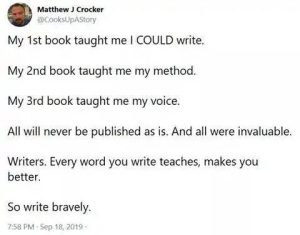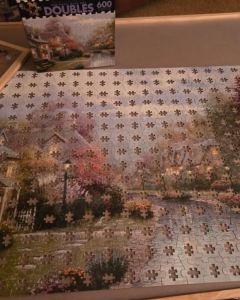I don’t care what anyone tells you; it’s insanely difficult to write a book.
As writers, we all have different styles and processes. Some people can throw together a first draft within a month while for others it could take them years. There is no right or wrong answer, especially when starting out as an author. As a matter of fact, you’re going to learn a LOT as you focus on finishing your book.

What does a first draft look like?
Just as everyone’s writing style is specific to them, so is their process, but there are some pieces of advice that can make the journey smoother and less like chewing nails.
If you keep this one single goal in mind, then everything else will fall into place: Get the words on the page.
A first draft is not meant to be perfect. It is meant to exist.
I stand by the saying, ‘You can’t edit a blank page’. Some people try for their first draft to be perfect, and certainly after a lot of practice and experience, and with deploying mindful writing, your drafts can be penned cleaner and cleaner, however, I’ve found this aim for a perfect first draft to be a common pitfall for many authors.
Trying for perfection, it’s easy to get trapped in a scene, bashing your head against a wall over and over as you try to figure out the best way to write it. I used to get hung up over words sometimes for hours trying to remember the exact word I needed in that moment. I would lose days, if not weeks, over trying to figure out a specific scene.
The day I started utilizing placeholders and summarizing, was a gamechanger.
One example:
“I smiled at him. but it wasn’t sweet or SOMETHING, it was vicious and conniving. FIGURE THIS OUT.”
Leaving notes for myself, filler words, ___, or highlighting sections for my attention, are all ways to move on while making sure I know I’ll be fixing it later.
My Process
What I’ve found to be most helpful about drafting and editing a book, is to not think of it as a linear project, but instead something that will need multiple passes to create a polished, cohesive story.
Consider it as a puzzle within a puzzle. First, begin with the corner pieces: your major plot points. Then, put together the edges: the general outline of the story. Next, start piecing it together. You’re not going to find all of the pieces of the same spot at the same time, but as you go, it’ll all come together as long as you don’t give up. Then, when all of the major pieces are fit together, go back over it with the smaller ones to fill in the missing gaps.

Using this process for drafting helps remove stress and keeps me focused on that main goal of getting the words on the page. And when it’s time for editing, I do it all over again. I never try to polish the draft perfectly on my first editing pass. The first time around I might try to focus mostly on line and developmental edits, then I’ll go back over it again to plug in little nuances to help tie the story together, and then perhaps another pass being mindful of flow and anything that might have been missed.
Placeholder words and summarizing paragraphs/scenes/chapters can be useful tools for both pantsers and plotters—writers that figures out the story as they go versus one who plots the entire thing before they even get started, respectively. Either way, it allows you grace as an author and understanding that nothing has to be perfect all at once.
Thanks for reading! If you have any tips or tricks you’d like to share, I’d love to read about them. Feel free to share in the comments or reach out to me on the Connect page.



